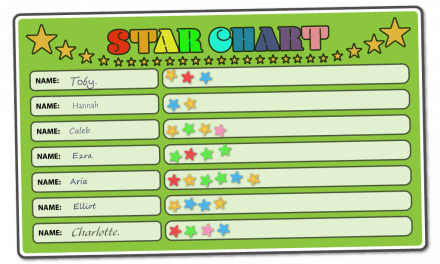There has been much research on the topic of just what it is that makes for an effective reward system; despite extensive academic literature on the subject (and debates that rage on between topics such as intrinsic and extrinsic motivation) rewards really needn’t represent a complex, time-consuming system that adds to your everyday pressures as a teacher.
Here are five ideas that work and require minimal effort on your part.
1. Write a personal note
The impact of a personal note recognising a student’s good behaviour or performance is a drastically underappreciated reward. For optimal effect, post the letter directly to your student at their home address.
2. Provide students with choice and power
Pupils of any age range often feel in short supply of choice and power – which is why providing these things as rewards is so effective (it also helps develop responsibility). The exact set-up of this will depend upon the class that you’re teaching, although it can be based on allowing student(s) to choose their medium of learning, topic, resources or activities.
You could even hand over the teaching reins for 30 minutes (though you’d need to define set boundaries and clear guidance).
3. Define class jobs and motivate with weekly rewards
Class jobs are an exceptional way to help pupils learn about the working environment; roles could include time-keeper, teacher assistant; being responsible for assigning roles for fellow students; chores; delivering school communications and so on.
Once more, the reward will depend upon age range, you could even introduce a points system, with larger rewards once a certain level is reached.
4. Tap into the power and promise of a rewards app
ClassDoJo is one of a few examples of classroom apps that feature student recognition; they aim to create a positive classroom culture by encouraging students for any skill or value they define.
Further app options include: LiveSchool, Pupil Reward Points and ePraise.
Of course, if you already use EDLounge in your setting, you don’t need to use a separate app as you can create your own reward structure by, for example, unlocking learning games, giving students virtual currency to spend in the EDVille virtual environment, and creating certificates to reward the completion of personalised learning pathways.
5. End of Term, and big potential rewards
A long-term goal can be effective, but it must also work toward a sufficiently motivating reward come the close of term.
This could well be powerfully combined with intrinsic motivators. Simply ask each student to write down their academic goal for the end of the year (whether this be grade based or some other form of goal, such as improving a particular skill or overcoming a sticking point).
You’ll need to oversee the process to ensure that such goals are both achievable and not underwhelming.
How do you reward students in your setting? Share your ideas with other teachers in the comments below.









